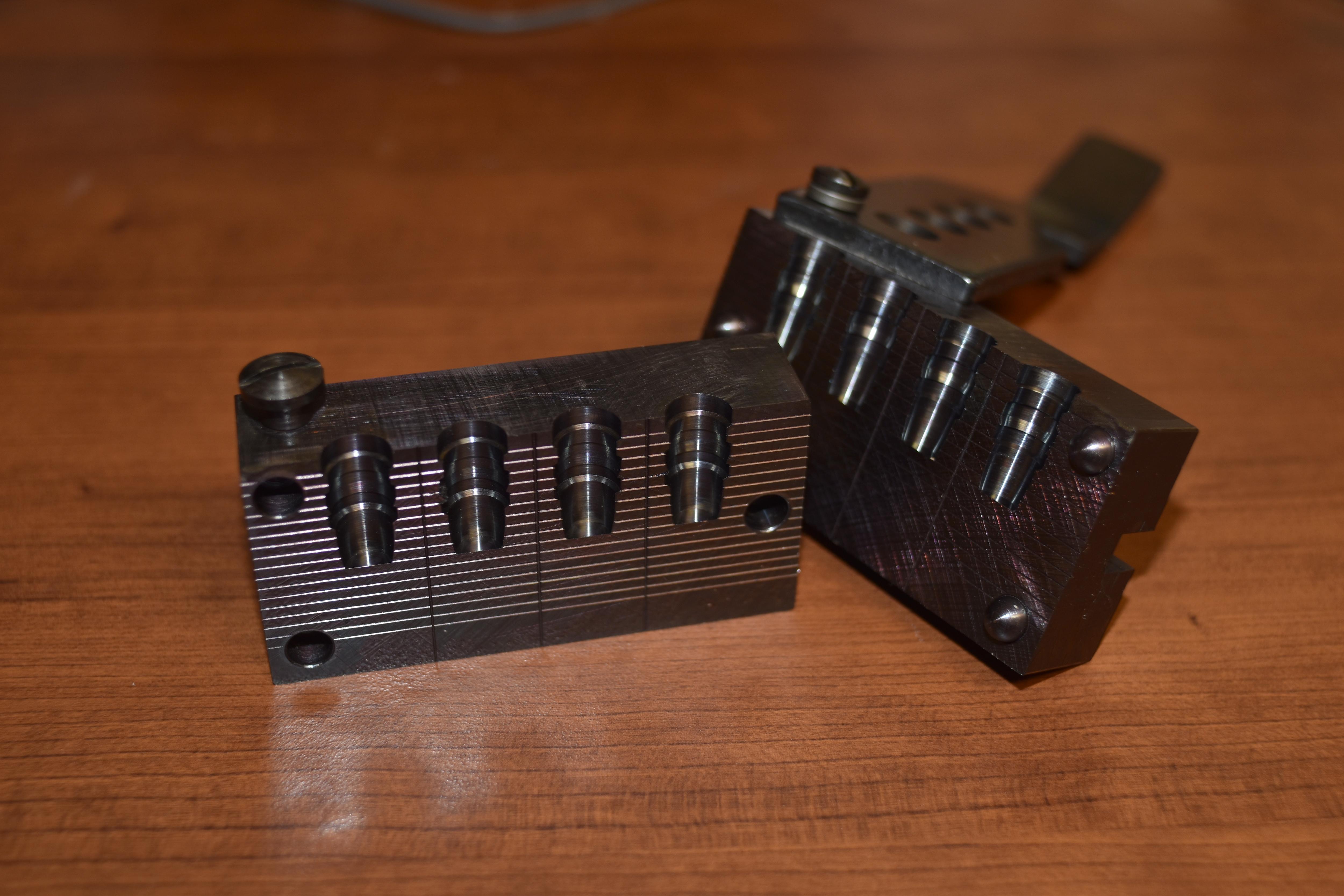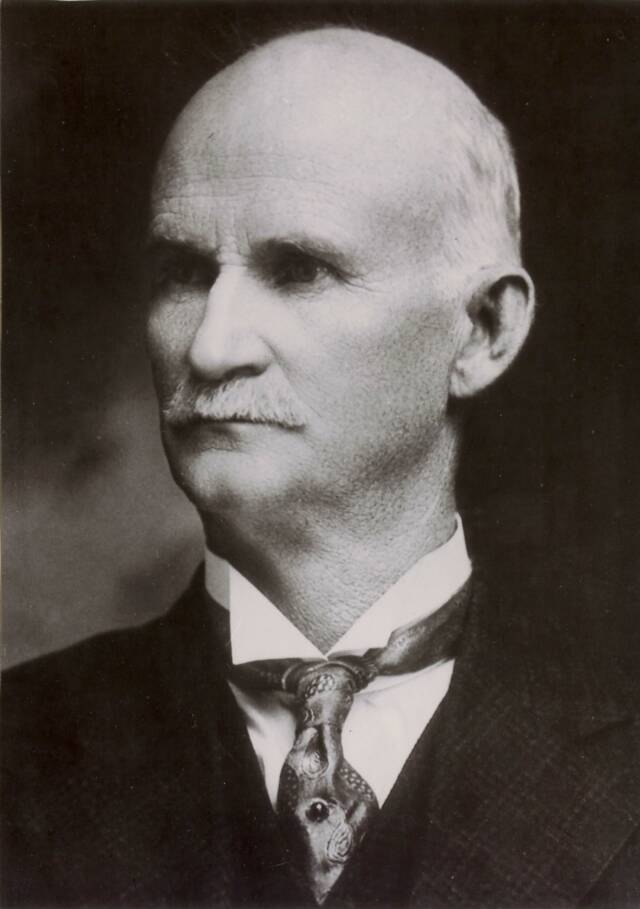|
Semiwadcutter
A semiwadcutter (SWC) or flat-nose is a type of all-purpose bullet commonly used in revolvers. The SWC combines features of the traditional round-nosed bullets and the wadcutter bullets used in target shooting, and is used in both revolver and rifle cartridges for hunting, target shooting and plinking. Full wadcutters frequently have problems reliably feeding from the magazines of semi-automatic pistols, so SWCs may be used when a true WC is desired but cannot be used for this reason. The semiwadcutter design consists of a roughly conical shape with the tip truncated flat (called a '' meplat''), sitting on a cylinder (''A'' at right). The base of the cone is slightly smaller in diameter than the cylinder, leaving a sharp shoulder. The flat nose punches a clean hole in the target, rather than stretching/tearing it like a round nose bullet would, and the sharp shoulder enlarges the hole neatly, allowing easy and accurate scoring of the target. A hunting flat nosed cast bullet ... [...More Info...] [...Related Items...] OR: [Wikipedia] [Google] [Baidu] |
Elmer Keith
Elmer Merrifield Keith (March 8, 1899 – February 14, 1984) was an American rancher, firearms enthusiast, and author. Keith was instrumental in the development of the first magnum revolver cartridge, the .357 Magnum (1935), as well as the later .44 Magnum (1956) and .41 Magnum (1964) cartridges, credited by Roy G. Jinks as "the father of big bore handgunning." Keith was born in Hardin, Missouri, and overcame serious injuries that he had sustained at age 12 in a fire when he was living in Missoula, Montana. Career During World War II, Keith served as an inspector at the Ogden, Utah, Arsenal. The rifles that he inspected were cartouche stamped with the initials "OGEK" in a rectangular box, on the buttstock. Rifles stamped OGEK without a rectangular box were inspected by Ed Klouser at the same Ogden Arsenal. Magnum revolvers Keith's first major contribution, the .357 Magnum, was the result of handloading the .38 Special cartridge far beyond normally accepted limits, ... [...More Info...] [...Related Items...] OR: [Wikipedia] [Google] [Baidu] |
Bullet
A bullet is a kinetic projectile, a component of firearm ammunition that is shot from a gun barrel. They are made of a variety of materials, such as copper, lead, steel, polymer, rubber and even wax; and are made in various shapes and constructions (depending on the intended applications), including specialized functions such as hunting, target shooting, training, and combat. Bullets are often tapered, making them more aerodynamic. Bullet size is expressed by weight and diameter (referred to as "caliber") in both imperial and metric measurement systems. Bullets do not normally contain explosives but strike or damage the intended target by transferring kinetic energy upon impact and penetration. Description The term ''bullet'' is from Early French, originating as the diminutive of the word ''boulle'' (''boullet''), which means "small ball". Bullets are available singly (as in muzzle-loading and cap and ball firearms) but are more often packaged with propellant as a cartri ... [...More Info...] [...Related Items...] OR: [Wikipedia] [Google] [Baidu] |
External Ballistics
External ballistics or exterior ballistics is the part of ballistics that deals with the behavior of a projectile in flight. The projectile may be powered or un-powered, guided or unguided, spin or fin stabilized, flying through an atmosphere or in the vacuum of space, but most certainly flying under the influence of a gravitational field. Gun-launched projectiles may be unpowered, deriving all their velocity from the propellant's ignition until the projectile exits the gun barrel. However, exterior ballistics analysis also deals with the trajectories of rocket-assisted gun-launched projectiles and gun-launched rockets; and rockets that acquire all their trajectory velocity from the interior ballistics of their on-board propulsion system, either a rocket motor or air-breathing engine, both during their boost phase and after motor burnout. External ballistics is also concerned with the free-flight of other projectiles, such as balls, arrows etc. Forces acting on the projectile ... [...More Info...] [...Related Items...] OR: [Wikipedia] [Google] [Baidu] |
357 Magnum
The .357 Smith & Wesson Magnum, .357 S&W Magnum, .357 Magnum, or 9×33mmR (as it is known in unofficial metric designation) is a smokeless powder cartridge with a bullet diameter. It was created by Elmer Keith, Phillip B. Sharpe, and Douglas B. Wesson of firearm manufacturers Smith & Wesson and Winchester. The .357 Magnum cartridge is notable for its highly effective terminal ballistics. The .357 Magnum cartridge is based upon Smith & Wesson's earlier .38 Special cartridge. It was introduced in 1935, and its use has since become widespread. Design The .357 Magnum was collaboratively developed over a period in the early to mid-1930s by a group of individuals as a direct response to Colt's .38 Super Automatic. At the time, the .38 Super was the only American pistol cartridge capable of defeating automobile cover and the early ballistic vests that were just beginning to emerge in the Interwar period. Tests at the time revealed that those vests defeated any handgun bullet trav ... [...More Info...] [...Related Items...] OR: [Wikipedia] [Google] [Baidu] |
M1911
The Colt M1911 (also known as 1911, Colt 1911, Colt .45, or Colt Government in the case of Colt-produced models) is a single-action, recoil-operated, semi-automatic pistol chambered primarily for the .45 ACP cartridge. History Early history and adaptations The M1911 pistol originated in the late 1890s as the result of a search for a suitable self-loading (or semi-automatic) pistol to replace the variety of revolvers in service at the time. The United States was adopting new firearms at a phenomenal rate; several new pistols and two all-new service rifles ( M1892/96/98 Krag and M1895 Navy Lee), as well as a series of revolvers by Colt and Smith & Wesson for the Army and Navy, were adopted just in that decade. The next decade would see a similar pace, including the adoption of several more revolvers and an intensive search for a self-loading pistol that would culminate in the official adoption of the M1911 after the turn of the decade. Hiram S. Maxim had designed a self- ... [...More Info...] [...Related Items...] OR: [Wikipedia] [Google] [Baidu] |
Bullseye Shooting
Bullseye shooting is a category of shooting sport disciplines where the objective is to score points with carefully placed precision fire by hitting a shooting target, target as close to its center as possible. The name refers to the target center's nickname, the "Bullseye (target), bull's eye". In Scandinavia, this type of shooting competition is referred to as Range-Shooting (, , ), as it usually takes place at dedicated shooting range. A large emphasis is put on accuracy and precision through steady breath, sight picture and trigger control, and fixed and relatively long time limits give competitors time to concentrate for a perfect shot. An example of bullseye shooting competitions is the International Shooting Sport Federation, ISSF pistol and rifle events, but there are also many other national and international disciplines which can be classified as bullseye shooting, e.g., NRA Precision Pistol competitions in the United States. Matches are normally held at permanent sh ... [...More Info...] [...Related Items...] OR: [Wikipedia] [Google] [Baidu] |
45 ACP
The .45 ACP (Automatic Colt Pistol), also known as .45 Auto, .45 Automatic, or 11.43×23mm is a Rim (firearms)#Rimless, rimless straight-walled handgun Cartridge (firearms), cartridge designed by John Moses Browning in 1904, for use in his prototype Colt's Manufacturing Company, Colt semi-automatic pistol. After successful military trials, it was adopted as the standard chambering for Colt's M1911 pistol. The round was developed due to a lack of stopping power experienced in the Moro Rebellion in places like Sulu. The issued ammunition, .38 Long Colt, had proved inadequate, motivating the search for a better cartridge. This experience and the Thompson–LaGarde Tests of 1904 led the Army and the Cavalry to decide that a minimum of .45 caliber was required in a new handgun cartridge. The standard-issue military .45 ACP cartridge uses a round-nose bullet at approximately fired from a government-issue M1911A1 pistol. It operates at a relatively low maximum chamber pressure rating ... [...More Info...] [...Related Items...] OR: [Wikipedia] [Google] [Baidu] |
Meplat
The meplat (from the French word "''méplat''" meaning "flat surface of a cylinder") is the technical term for the flat or open tip on the nose of a bullet. The shape of the meplat is important in determining how the bullet moves through the air. In particular the size and shape of the meplat has a significant effect on the ballistic coefficient of a bullet. Theory ''Trimming'' the meplat (cutting the tip of the bullet, thus increasing its area) decreases the bullet's ballistic coefficient, increasing drag, and making it more susceptible to wind drift. So even though the grouping will be tighter, the time of flight and wind drift will be slightly greater. ''Pointing'' the meplat (reducing its area) involves pressing the bullets into a special die. This decreases the size of the meplat which increases the ballistic coefficient, which reduces drag, time of flight, and wind drift of the bullet. Some target shooters sort their bullets by weight, point their bullets, and then trim ... [...More Info...] [...Related Items...] OR: [Wikipedia] [Google] [Baidu] |
Revolver
A revolver is a repeating handgun with at least one barrel and a revolving cylinder containing multiple chambers (each holding a single cartridge) for firing. Because most revolver models hold six cartridges before needing to be reloaded, revolvers are commonly called six shooters or sixguns. Due to their rotating cylinder mechanism, they may also be called wheel guns. Before firing, cocking the revolver's hammer partially rotates the cylinder, indexing one of the cylinder chambers into alignment with the barrel, allowing the bullet to be fired through the bore. By sequentially rotating through each chamber, the revolver allows the user to fire multiple times until having to reload the gun, unlike older single-shot firearms that had to be reloaded after each shot. The hammer cocking in nearly all revolvers is manually driven and can be cocked either by the user using the thumb to directly pull back the hammer (as in single-action), or via internal linkage relaying t ... [...More Info...] [...Related Items...] OR: [Wikipedia] [Google] [Baidu] |






